Understanding Home Laser Scar Removal
Home laser scar removal has gained popularity as a non-invasive, convenient method for improving the appearance of scars. This article reviews the latest scientific research, clinical data, and patient feedback to provide an in-depth overview of improvement rates, safety considerations, and satisfaction levels associated with home laser scar removal treatments. We also explore how professional laser therapies inform the expected outcomes and compare these to at-home options, helping readers make informed decisions about their scar management journey.
Overall Effectiveness of Home Laser Scar Removal Treatments
What is the overall effectiveness of home laser scar removal treatments?
Laser therapy for scars, including options suitable for use at home, has shown promising results in reducing the appearance of scars and relieving associated symptoms like pain and itchiness. Studies indicate that laser treatments can decrease scar visibility significantly, with many patients experiencing high satisfaction and notable improvements in skin texture and color.
While professional laser procedures are typically performed in clinical settings, some at-home devices aim to deliver similar benefits. However, the efficacy of these home treatments generally depends on the quality of the device, the user's adherence to instructions, and individual skin characteristics.
Research demonstrates that multiple sessions over several months are often necessary to achieve meaningful results. Patients undergoing such treatments report that improvement in scar appearance is gradual, often noticeable after the first few sessions, and continues to improve with ongoing use.
Specialist-guided laser treatments are associated with higher safety and effectiveness. These procedures are performed by trained dermatologists using advanced technology, ensuring optimal outcomes and minimal risks. For home lasers, choosing validated devices, following safety guidelines, and maintaining consistent treatment schedules are vital.
Although home laser treatments can lead to visible scar reduction and symptom relief, they usually do not completely eliminate scars. The results depend greatly on factors such as scar type, skin type, and treatment adherence. Additionally, because the laser's strength and depth are usually lower than professional devices, the improvements may be less dramatic.
It is essential to manage expectations and consult with a healthcare provider before starting any home laser treatment. Proper skin assessment, safety precautions—including sun protection— and understanding the limitations of at-home devices will help maximize the benefits and safeguard health.
Overall, home laser scar removal treatments can be an effective supplementary option for improving scar appearance and reducing distress when used appropriately, though they are best used as part of a comprehensive treatment plan guided by medical professionals.
Safety Considerations and Potential Risks of Home Laser Scar Removal
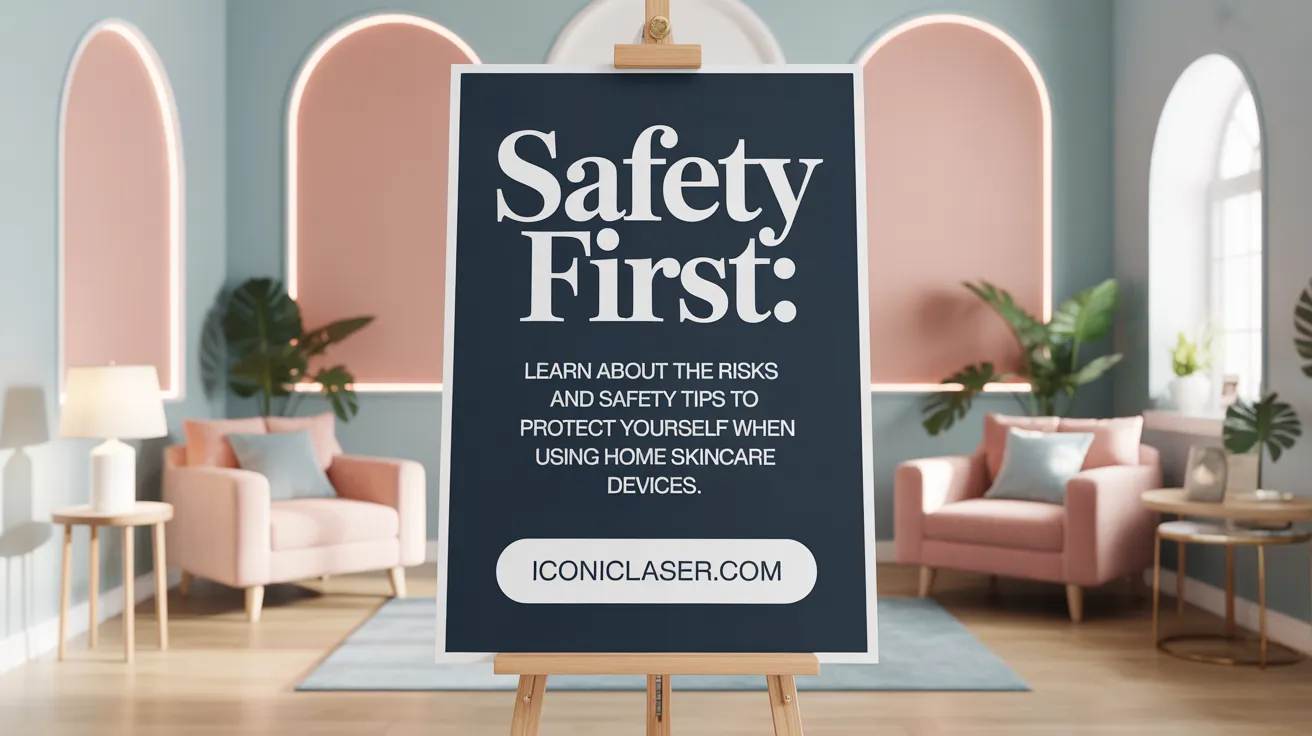
What safety considerations and potential risks are associated with home laser scar removal?
Home laser scar removal is an appealing option for some individuals seeking to improve the appearance of scars. However, it comes with important safety considerations and potential risks. One major concern is the incorrect use of at-home laser devices. These devices, while designed to be safer than professional equipment, can still cause injuries if not used properly.
Improper application can lead to burns, skin injuries, and unwanted pigmentation changes. This risk is heightened when lasers are used near sensitive areas like the eyes or over pigmented or tattooed skin, as these areas are more prone to adverse reactions. For example, misuse can result in hyperpigmentation or hypopigmentation, which can be difficult to correct.
Although many devices include safety features such as skin contact sensors and preset intensity levels, user error remains a significant risk. Overuse or misalignment during treatment may cause localized trauma or exacerbate existing skin issues.
Darker skin tones are particularly vulnerable. They have a higher risk of burns and pigmentation alterations because laser energy is preferentially absorbed by melanin. Individuals with darker complexions should exercise caution and ideally seek advice from a qualified healthcare provider before starting treatment.
Furthermore, the effectiveness of home laser devices may be limited compared to professional treatments, often necessitating multiple sessions. This can increase the risk of improper use or cumulative skin damage if not carefully monitored.
In summary, while home laser scar removal can be convenient, it requires careful adherence to safety instructions. Consulting a healthcare professional prior to use helps to evaluate individual skin risks, ensure the correct technique, and tailor a safe, effective treatment plan. Proper guidance minimizes the risk of skin injury and pigmentation issues, especially for those with darker skin tones.
Patient Satisfaction Rates and Feedback on Home Laser Scar Removal
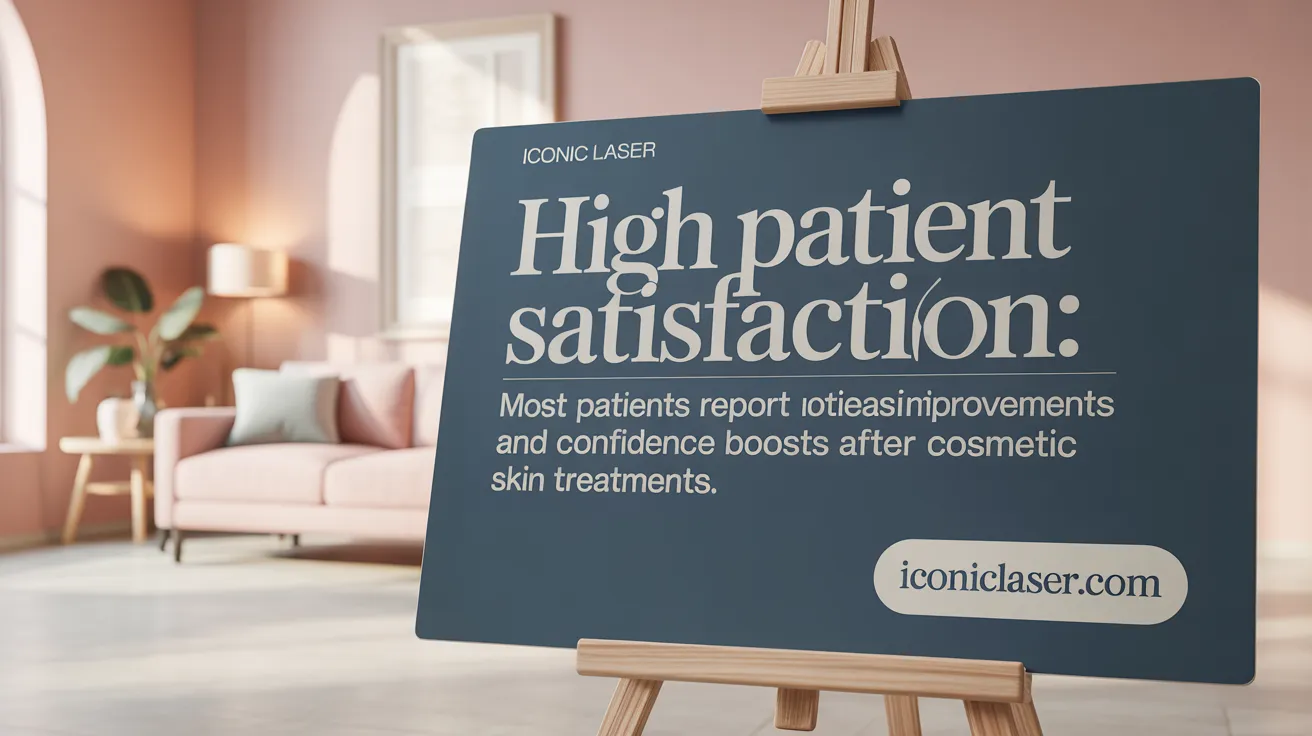 Patients undergoing laser therapy for scar removal generally report high satisfaction with the outcomes. Various studies indicate that approximately 75% of patients observe significant improvements in their scars, assessing features such as color, texture, thickness, and overall appearance. Many patients highlight enhanced confidence, social interactions, and quality of life following treatment.
Patients undergoing laser therapy for scar removal generally report high satisfaction with the outcomes. Various studies indicate that approximately 75% of patients observe significant improvements in their scars, assessing features such as color, texture, thickness, and overall appearance. Many patients highlight enhanced confidence, social interactions, and quality of life following treatment.
Patients often perceive their scars as less prominent and more uniform, which contributes to their positive feedback. The majority also express willingness to recommend laser treatments to others, reflecting overall contentment with the procedure.
However, some common side effects are reported, including mild and transient erythema (redness) and temporary hyperpigmentation. These side effects are typically self-limited and resolve within days to weeks. Discomfort during and immediately after treatment varies but is generally manageable.
Long-term satisfaction remains a mixed picture. While many patients feel that the improvements are lasting, some report a decline in perceived results after several months, with satisfaction scores decreasing slightly over time. Despite this, most agree that the benefits outweigh drawbacks, and continued follow-up reveals sustained positive perceptions.
Overall, the evidence supports that laser scar removal is both safe and effective from the patients’ perspective, with high satisfaction rates and positive evaluations of treatment impact, although individual results and patient expectations may influence long-term feedback.
Statistical Improvement Rates After Laser Scar Removal Treatments
What does current scientific research and statistical data indicate about the improvement rates after laser scar removal treatments?
Research and clinical studies consistently demonstrate that laser therapies can produce substantial improvements in scar appearance and texture. Quantitative data suggest that many patients experience improvement rates ranging from around 26% to over 80%.
For example, one meta-analysis of randomized controlled trials involving laser treatments found that skin smoothness scores significantly improved post-treatment, with some studies reporting up to 83% enhancement in hypertrophic scars after just one or two sessions of pulsed dye laser (PDL).
Fractional CO2 lasers, often used for deeper scar remodeling, have shown approximately 70% improvement in scar severity after completing about six sessions. These improvements are not only statistically significant but are also meaningful to patients, with many reporting high satisfaction levels.
Systematic reviews have established that low-level laser therapy (LLLT) and pulsed dye lasers (PDL) are particularly effective, often demonstrating statistically significant reductions in scar severity scores such as the Vancouver Scar Scale (VSS). For instance, LLLT and PDL treatments have been associated with mean score decreases of approximately 3.78 and 2.46 points respectively, indicating a notable reduction in scar vasculature and pigmentation.
Furthermore, the timing of laser interventions plays a crucial role. Studies show that initiating laser treatment within the first week or three months post-surgery or trauma correlates with better outcomes. Early intervention facilitates improved collagen organization, reduced erythema, and minimized hypertrophic scar formation.
Overall, the collective body of research underscores laser therapy as an effective, minimally invasive option. The improvements are often long-lasting, although outcomes depend on scar type, skin properties, and treatment protocols. Patients benefit from high satisfaction rates, with ongoing studies reinforcing the safety and efficacy of various laser modalities for scar management.
Efficacy of Laser Treatments for Different Scar Types
How effective are laser treatments for different types of scars, such as burn scars, trauma scars, post-surgical scars, and acne scars?
Laser therapy has proven to be a versatile and effective approach for treating a wide range of scars, including burn scars, trauma scars, post-surgical scars, and acne scars. The primary mechanism involves remodeling collagen in the skin, which can reduce hypertrophy, improve texture, and normalize pigmentation.
For hypertrophic and keloid scars, various laser modalities like pulsed dye laser (PDL), fractional CO2 laser, and non-ablative fractional lasers have demonstrated substantial improvement rates, often between 57% and 83%. These treatments help in reducing vascularity, thickened tissue, and pigmentation, leading to a more even and aesthetically pleasing appearance.
Early intervention plays a crucial role in optimizing outcomes. Applying laser therapy soon after injury or surgery, typically within the first few months, can prevent scar worsening and enhance final results. For example, fractional CO2 lasers used within three weeks of scar formation have shown to promote better collagen organization and faster re-epithelialization.
While side effects like transient erythema, hyperpigmentation, or mild discomfort are possible, the overall safety profile of laser treatments remains favorable. Most adverse events resolve quickly, and high patient satisfaction is commonly reported. Treatments are minimally invasive outpatient procedures that require multiple sessions, but many patients notice significant improvements after just a few treatments.
In summary, laser therapy effectively improves not just the visual appearance but also the texture and functional properties of various scar types. Tailoring laser modalities and timing to the specific scar characteristics can maximize patient benefits, making it a cornerstone in scar management.
Recent Research Outcomes and Success Rates in Laser Scar Removal
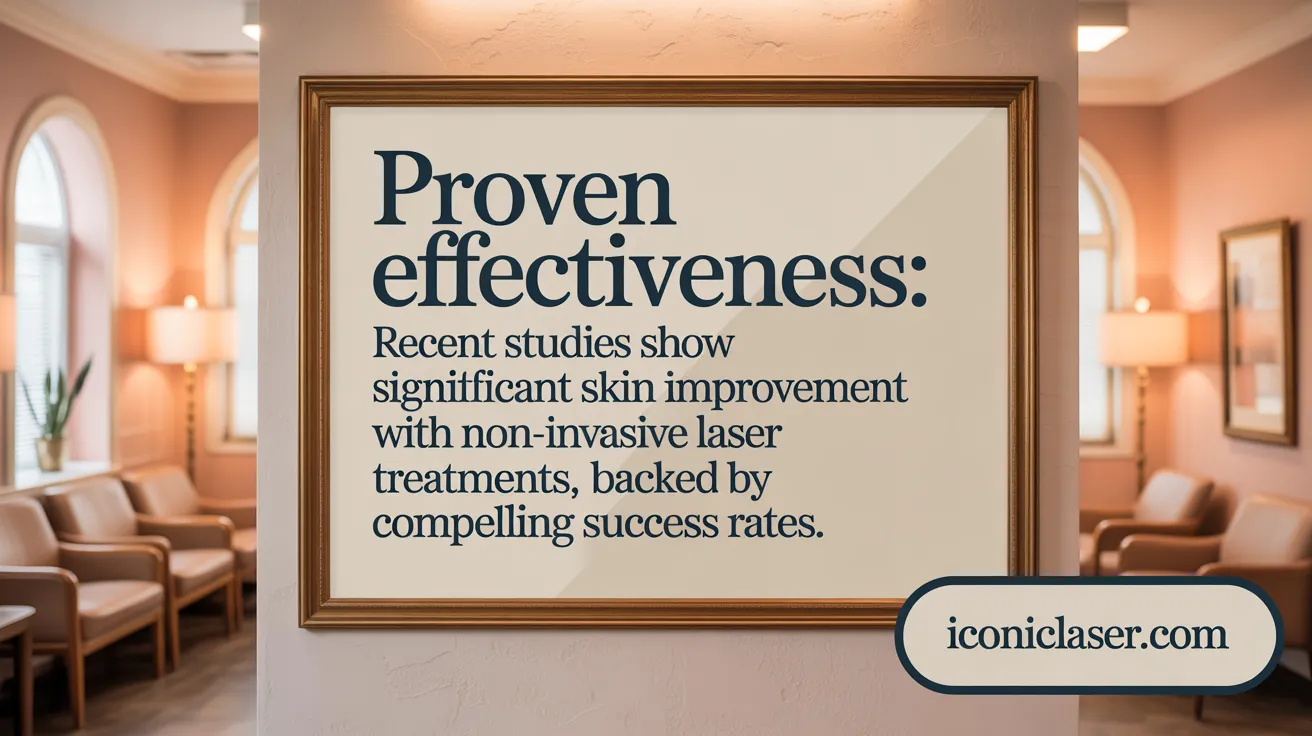
What are the recent medical research outcomes and success rates reported for laser scar removal?
Recent studies and clinical trials indicate that laser treatments for scars, especially fractional CO₂ laser and pulsed dye laser (PDL), achieve notable improvements in both aesthetic and functional aspects of scars. These therapies work by stimulating collagen synthesis, reducing vascularity, and improving skin texture.
Objective assessments, such as 3D imaging techniques, have shown an average of 45% reduction in scar volume, along with improvements in skin smoothness, pigmentation, and overall topography. For example, meta-analyses of randomized controlled trials reveal that skin lesion scores improve significantly, with some studies reporting over 50% enhancement. Patients generally report high satisfaction, often rating their appearance as improved by 75% at follow-up.
Clinically, these laser interventions enhance skin quality with minimal invasiveness and downtime. They are capable of effectively treating various scar types from burns, trauma, and acne. The treatment regimens typically involve 3 to 6 sessions spaced over several months, with significant improvements often observable after the first few treatments.
Furthermore, combination therapies—such as laser treatments combined with platelet-rich plasma (PRP)—have demonstrated even higher efficacy and patient satisfaction, highlighting ongoing advancements in personalized scar management. The overall success rates, supported by multiple studies, suggest that laser scar removal not only optimizes aesthetic outcomes but also improves scar-related physical functions, benefiting patients' emotional and social well-being.
Comparative Analysis of Patient Outcomes Across Laser Treatments
How do patient outcomes and satisfaction compare between different laser scar removal treatments?
Laser therapies for scar removal show diverse results depending on the type of laser used and whether treatments are combined with other methods. Fractional lasers, including fractional CO2 and non-ablative variants like 1540 nm, tend to deliver notable improvements in scar texture, thickness, and pliability. Patients generally report high satisfaction with these treatments, citing significant aesthetic improvements and minimal side effects such as transient erythema.
Ablative lasers like full-thickness CO2 and Er:YAG are particularly effective for deep scars, often resulting in more dramatic re-surfacing and texture improvement. However, these treatments involve longer recovery times, more discomfort during sessions, and a higher incidence of temporary side effects, which can influence overall patient satisfaction.
Studies also reveal that combination therapies, such as fractional CO2 laser used alongside platelet-rich plasma (PRP), often produce superior outcomes. These combination methods tend to reduce erythema, enhance scar volume reduction, and improve overall appearance more effectively than monotherapies. Patients undergoing sequential or combined treatments typically report greater satisfaction levels, especially when treatments are initiated early post-injury or surgery.
In terms of side effects, mild adverse events like erythema, edema, and temporary hyperpigmentation are common across treatments but are generally transient. Ablative procedures may carry a slightly higher risk of prolonged downtime and discomfort, which can influence patient perception.
Regarding preferences, many patients favor treatments that balance efficacy with minimal downtime and discomfort. Non-ablative and fractional laser therapies are preferred for their shorter recovery periods and high satisfaction rates.
Overall, patient satisfaction correlates with the degree of scar improvement, the invasiveness of the procedure, and the management of side effects. While all laser treatments have demonstrated effectiveness in reducing scars, optimal outcomes are achieved through personalized treatment planning that considers individual scar features and patient preferences.
Consider the following overview table for quick comparison:
| Treatment Type | Effectiveness | Side Effects | Downtime | Patient Satisfaction |
|---|---|---|---|---|
| Fractional Non-Ablative (e.g., 1540 nm) | High | Mild erythema, swelling | Short (few days) | High (~8/10) |
| Ablative (e.g., CO2, Er:YAG) | Very high for deep scars | Edema, erythema, crusting | Longer (up to a week) | Variable, often higher with proper management |
| Combined therapies (e.g., laser + PRP) | Superior | Similar mild effects | Similar to fractional | Slightly higher satisfaction scores |
These findings suggest individualized approaches optimize patient outcomes, with combination therapies gaining favor for their enhanced efficacy and satisfaction.
Scientific Evidence Supporting Safety and Efficacy of Home Laser Devices
What scientific evidence supports the efficacy and safety of home laser scar removal devices?
Current research and clinical studies predominantly focus on professional laser treatments, which have demonstrated significant benefits in scar reduction and skin rejuvenation. These therapies, including fractional CO2 lasers, pulsed dye lasers, and non-ablative fractional lasers, have been extensively evaluated through randomized controlled trials, systematic reviews, and meta-analyses.
In these studies, professional laser procedures have shown to produce marked improvements in skin texture, lesion surface irregularities, and pigmentation. The evidence indicates high patient satisfaction and favorable safety profiles, with most adverse effects being mild, transient, and manageable, such as erythema, edema, or pigmentation changes.
For example, fractional CO2 laser therapy has been shown to reduce scar volume significantly, improve collagen organization, and enhance overall skin appearance with minimal risks. Meta-analyses further support the safety of these treatments, emphasizing that early interventions within a few weeks of scar formation lead to better outcomes.
However, when it comes to do-it-yourself (DIY) or home laser devices marketed for scar removal, the scientific evidence is limited. These devices typically lack the rigorous validation through randomized controlled trials, and their safety and efficacy remain under-researched. Regulatory approvals for such devices are often not as stringent as those for medical-grade equipment, raising concerns about their safety.
In summary, while professional laser treatments are well-supported by scientific data for their safety and effectiveness, the evidence for home laser devices is scarce. Consumers should approach these DIY options with caution, given the absence of robust clinical validation and potential safety risks.
| Aspect | Professional Lasers | Home Laser Devices | Details |
|---|---|---|---|
| Efficacy | Supported by clinical trials | Limited evidence | Professional lasers show significant improvements; home devices lack strong data |
| Safety | Proven safe with mild side effects | Unknown safety profile | Professional treatments are validated; home devices risk unknown adverse effects |
| Approval | FDA or equivalent approval | Often unapproved | Rigorous regulation for professionals; less oversight for home devices |
| Patient Satisfaction | High in studies | Unclear due to lack of data | Well-documented satisfaction for professional treatments |
Clinical and Statistical Insights on Scar Improvement Post-Laser Therapy
What clinical results and statistical insights are available on the improvement of scar appearance following laser therapy?
Recent research and systematic reviews have provided robust evidence that laser therapy significantly enhances scar appearance. Various laser modalities, including low-level laser therapy (LLLT), pulsed dye laser (PDL), fractional CO₂ lasers, and non-ablative fractional lasers, have demonstrated measurable benefits.
Quantitative data highlight substantial improvements: studies measuring the Vancouver Scar Scale (VSS) report an average reduction of –3.78 with LLLT and –2.46 with PDL, reflecting notable decreases in vascularity, pigmentation, and scar elevation. Fractional laser treatments, such as the UltraPulse CO₂ laser, achieve high efficacy, with reported improvement rates of 80–98% in scar pliability, redness, and overall aesthetic appearance.
The timing of intervention plays a critical role; early laser application—particularly within the first few weeks post-injury or surgery—has been associated with better outcomes. Treatments initiated within one week show higher satisfaction scores and more significant scar improvements. Clinical studies also reveal that laser therapy promotes collagen remodeling, improves skin texture, and reduces hypertrophic features.
Patients subjected to laser treatments often experience high satisfaction levels, with many reporting improvement in scars’ color, texture, and thickness. These advancements are especially supported by technologies like fractional CO₂ lasers and pulsed dye lasers, which target specific scar features such as vascularity and surface irregularities.
In summary, scientific evidence confirms that laser treatments are effective, minimally invasive options for scar management. They facilitate substantial aesthetic improvements, contribute to scar remodeling, and have been shown to provide long-lasting results, making them an essential component of modern scar therapy.
Key Factors Influencing Success and Patient Perception of Laser Scar Removal
What factors influence the success of laser scar removal treatments and how do they affect patient perceptions?
Several important factors determine the effectiveness of laser treatments for scars and also shape how patients perceive their outcomes. Patient demographics such as age, sex, and skin phototype can influence healing and response. For example, younger patients and those with lighter skin tones often experience better results.
Scar characteristics like age and location also matter. Scars that are recent (less than 3 months old) and located in less mobile regions tend to respond more favorably to laser therapy. Early intervention within this period can enhance the overall appearance and function of linear scars.
The timing of treatment initiation plays a critical role. Initiating laser therapy soon after injury or surgery—preferably within the first few months—can lead to significant improvements in scar texture, vascularity, and overall aesthetics.
Laser modality choice, including fractional CO2, pulsed dye laser, or photobiomodulation, affects treatment outcomes. Combining therapies, such as laser with platelet-rich plasma (PRP), has shown to yield higher efficacy, boosting patient satisfaction.
Patient counseling and expectation management are equally crucial. Properly informing patients about realistic outcomes, potential side effects like transient erythema or pigmentation changes, and the necessity for multiple sessions help align patient expectations with probable results.
While clinical improvements often result in initial high satisfaction scores—with reports of about 75% of patients feeling significantly improved—the perception might decline over months. Factors like side effects, incomplete results, or scar recurrence can influence long-term satisfaction.
In summary, a tailored approach considering patient-specific factors combined with clear communication can optimize both the clinical success of laser treatments and how patients perceive their improvements.
Impact of Laser Scar Removal on Patient Quality of Life and Satisfaction
How do laser scar removal treatments impact overall patient outcomes, quality of life, and satisfaction metrics?
Laser treatments for scars have demonstrated impressive results in improving both the physical appearance of scars and patients' psychological well-being. Studies show that laser therapy significantly reduces scar severity scores, resulting in smoother, less prominent scars.
Patients consistently report high satisfaction with the outcomes. On average, satisfaction scores reach approximately 8.4 out of 10, reflecting general contentment with the aesthetic improvements. Importantly, about 75% of patients feel their scars have improved substantially by the end of treatment, and around 71% would choose to undergo the procedure again, highlighting the positive perception of laser therapy.
Beyond appearance, these treatments alleviate physical symptoms like redness, stiffness, pain, and itching, which contribute to overall comfort and function. Long-term follow-ups reveal that many patients experience sustained improvements, although some decline in perceived results occurs over time.
Psychologically, patients experience a boost in confidence and social interactions. Reductions in Dermatology Life Quality Index (DLQI) scores and improved FACE-Q satisfaction scores after treatment illustrate enhanced social and psychological functioning. The ability of laser therapies to improve skin texture, pigmentation, and overall scar quality leads to meaningful life quality enhancements.
Adverse effects are generally mild, such as transient erythema, edema, or pigmentary changes, which resolve within days to months. These minimal risks, combined with high satisfaction rates, emphasize that laser scar removal is a safe and effective procedure.
In conclusion, laser treatments offer substantial benefits, improving both physical scars and the psychological well-being of patients. The high satisfaction levels and low complication rates make laser therapy a preferred option for scar management, contributing positively to patients’ overall quality of life.
Advancements and Technologies in Laser Scar Removal
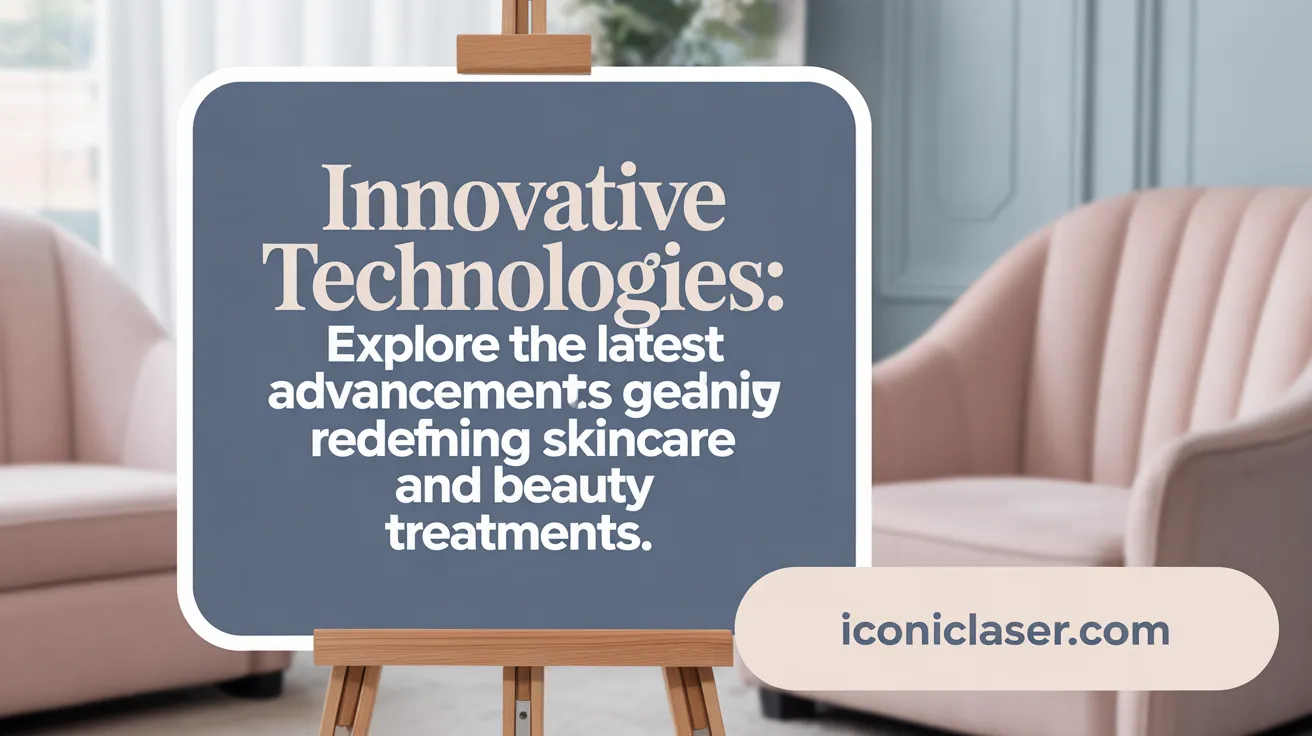
What are the new laser modalities used for scar removal?
Recent developments have introduced a variety of laser technologies to improve scar treatment outcomes. Fractional CO2 lasers, pulsed dye lasers, and photobiomodulation are among the most commonly used. Fractional CO2 lasers, emitting at 10,600 nm, penetrate deeply to stimulate collagen remodeling, showing significant efficacy in scar texture and thickness improvements. Pulsed dye lasers (595 nm) target vascular components, reducing redness and vascularity within scars. Non-ablative fractional lasers, operating at 1540 nm, have gained popularity for their less invasive nature with promising results.
Additionally, innovative lasers like potassium titanyl phosphate (532 nm) effectively treat periscar telangiectasias, while microsecond Nd:YAG (1064 nm) lasers address scar contractures with minimal adverse effects. Emerging treatments such as laser combined with platelet-rich plasma (PRP) and photobiomodulation are expanding therapeutic possibilities.
How are combined therapies enhancing scar management?
Combination therapies are increasingly recognized for their superior efficacy in scar remodeling. For example, pairing fractional CO2 lasers with PRP has yielded higher cure rates, improved tissue regeneration, and enhanced patient satisfaction. Other effective combinations include Erbium (Er) laser with PRP, and fractional laser with 30% salicylic acid, among others.
These multimodal approaches leverage the strengths of each modality—such as laser-driven collagen stimulation combined with biological enhancements like PRP, which supplies growth factors to accelerate healing.
What methods are used to optimize treatment protocols?
Optimizing laser scar treatments involves timing the intervention, selecting appropriate laser parameters, and tailoring plans to individual patient conditions. Evidence suggests that early treatment within 3 months post-surgery or injury leads to better outcomes, especially when using fractional CO2 lasers initiated at the third week after scar formation.
Procedures typically require 3 to 6 sessions spaced one month apart. Adjustments to laser intensity, pulse duration, and coverage depend on scar severity and skin type. Moreover, outpatient settings with brief recovery times enhance patient compliance. To ensure the best result, combining laser therapy with supportive measures like pressure therapy within 2 months or intralesional corticosteroid injections as needed can prevent hypertrophic or recurrent scars.
Are there recent scientific innovations impacting laser scar removal?
Significant scientific innovations include histopathological insights showing that lasers improve collagen organization and elastic fiber networks. Studies indicate lasers modulate expression levels of MMP-1 and TGF-β1, promoting balanced scar remodeling.
Meta-analyses of randomized controlled trials demonstrate that early intervention with fractional and non-ablative lasers yields better improvements, with rates often exceeding 50%. Furthermore, advances in laser technology have improved safety profiles, reducing adverse effects such as hyperpigmentation, purpura, and edema. Researchers continue to explore optimal combinations, parameters, and timing, driven by ongoing clinical trials and technological innovations that aim to make scar treatment safer, more effective, and accessible.
Treatment Protocols: Timing, Sessions, and Combination Approaches
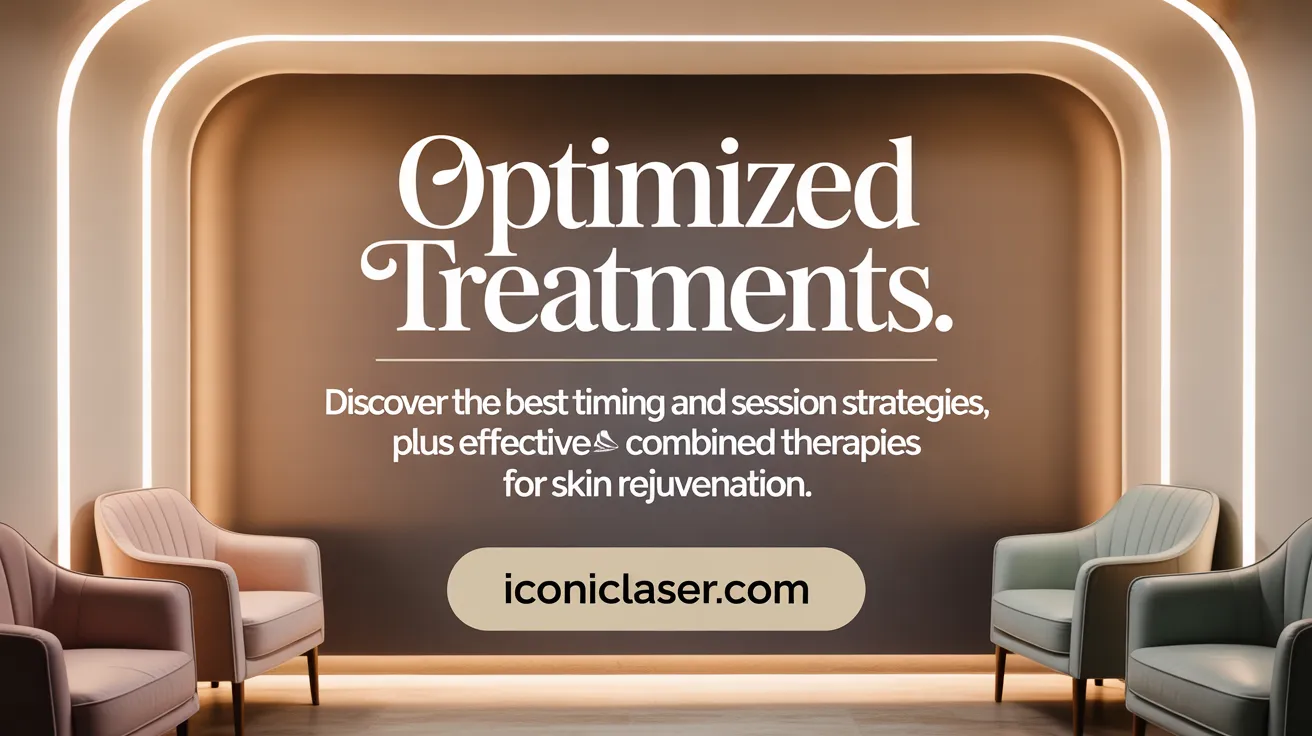
When is the optimal timing to start laser therapy after scar formation?
Early intervention plays a significant role in improving scar outcomes. Studies suggest that initiating laser treatments within the first 3 months postoperatively yields better results, especially on linear scars, by enhancing appearance and function. Notably, starting treatment as early as the third week after scar formation can lead to superior texture and appearance improvements.
How many sessions are typically needed for effective results?
Most patients require between three to six laser sessions for optimal scar remodeling. The number depends on scar severity, type, and individual skin healing response. Remarkably, some patients observe significant improvements after just one session, but multiple treatments enhance and solidify results. Each session usually lasts less than an hour, with visible changes often evident within a week.
Are combination therapies involving PRP or other modalities more effective?
Combination therapies tend to provide superior outcomes compared to monotherapy. For example, fractional CO2 laser combined with platelet-rich plasma (PRP) shows higher cure and improvement rates. Studies rank Erbium laser + PRP and fractional carbon dioxide laser + PRP at the top for efficacy.
Some therapies involve laser and Intralesional Injections, such as corticosteroids or botulinum toxin, to prevent hypertrophic scars or improve linear scar aesthetics. Using laser alongside PRP, radiofrequency microneedling, or noninvasive approaches enhances tissue remodeling, pigmentation, and texture improvement.
What are common treatment schedules and their results?
A typical treatment schedule includes sessions spaced about one month apart, with follow-up over several months. Maximal benefits emerge over time, especially with non-ablative lasers. Objective analyses after 6 months often show up to 50% reduction in scar volume and depth, with many patients rating their scar improvement as over 75%.
Outcome metrics include patient satisfaction, which often falls around 8.4 out of 10, and subjective evaluations showing a majority of scars achieving more than 50% visible improvement. Early treatments are also associated with fewer adverse effects, mostly mild erythema and edema that resolve within days.
In summary, initiating laser therapy early, employing a series of scheduled sessions, and combining modalities like PRP or corticosteroids can maximize scar outcomes, especially when tailored to individual patient needs.
Long-Term Outcomes and Patient Satisfaction Trends Over Time
How does patient satisfaction change after several months?
Initial post-treatment assessments show high patient satisfaction, with a mean rating of 8.4 out of 10 and about 75% of patients recommending the procedure at 30 months. Patients typically report significant improvements at 3 months, with 85% perceiving their results as meeting or exceeding expectations. However, this satisfaction tends to decrease over time, as evidenced by a decline in the mean appearance rating from 2.3 out of 3 at 3 months to 1.8 at 30 months, indicating that some perceived improvements diminish.
While most patients still acknowledge improvement, their perception of the results' longevity drops significantly from 85% at 3 months to 54% at 30 months, which is statistically significant (p = .01). Despite this decline, about 71% would opt to undergo the procedure again, reflecting overall positive initial responses.
Are there any long-term adverse effects?
Long-term safety profiles for laser therapy are generally favorable. Most adverse effects are mild and temporary, including transient erythema, edema, and pigmentary changes like hyperpigmentation or irregularities, affecting about 25% of patients. Importantly, no patients reported severe complications such as scarring, infections, or ectropion after 30 months.
Some patients experience increased skin sensitivity to topical products (around 17%) or pigment irregularities, which tend to resolve over time. The overall incidence of adverse reactions remains low, and no serious long-term side effects have been documented consistently across studies.
What do patients typically recommend or choose for maintenance?
Given the initial positive outcomes, many patients recommend laser treatments, especially when results are freshly apparent. The preference for single treatments is common due to considerations like side effects and costs, but combination therapies involving laser with platelet-rich plasma (PRP) have demonstrated superior efficacy and higher patient satisfaction. Maintenance strategies may include periodic touch-ups or adjunct treatments such as topical agents or pressure therapy to preserve scars' improved appearance.
How sustainable are the treatment effects?
Laser treatments for scars can produce lasting results, especially when performed early and followed by appropriate post-treatment care. Ablative lasers tend to offer more permanent improvements, though some recurrence is possible if the skin's healing capacity diminishes or if scars are severe.
The longevity of these improvements varies individually, influenced by skin type, scar severity, and adherence to complementary therapies like pressure therapy or intralesional injections. Regular follow-up and potential retreatments help sustain positive outcomes.
In summary, laser therapy demonstrates promising long-term results with high initial satisfaction, though some decline in perceived improvement occurs over time. Overall, with appropriate management and possibly maintenance treatments, patients can enjoy durable scar improvements with minimal long-term adverse effects.
| Aspect | Typical Outcome | Notes |
|---|---|---|
| Satisfaction over time | Declines from ~85% to ~54% | Significant but maintains overall positive perception |
| Long-term adverse effects | Mild, transient issues | No severe complications reported |
| Recommended maintenance | Follow-ups, adjunct therapies | To sustain results |
| Result permanence | Several years if well-maintained | Depends on skin response and adherence |
This evidence underscores that laser treatments for scars are a viable long-term solution, especially when initiated early and combined with ongoing care.
Summary and Future Perspective on Home Laser Scar Removal
Home laser scar removal represents a promising avenue for improving scar appearance with generally high patient satisfaction and improving clinical outcomes. While professional laser treatments offer robust evidence of efficacy and safety, home devices require cautious use and further scientific validation. Patient factors, treatment timing, and choice of laser modality all play crucial roles in determining success. Advances in laser technology and combination therapies continue to elevate treatment effectiveness and patient experience. Continued research and patient education are essential to maximize benefits and minimize risks associated with home laser scar removal, ensuring safer, more reliable outcomes for users worldwide.
References
- Retrospective Analysis of the Effectiveness of Laser ...
- Advancements in laser technologies for skin rejuvenation ...
- Advances and established therapies in linear scar prevention
- Laser Applications in Wound and Scar Management Post ...
- A Prospective Survey of Patient Experiences After Laser ...
- To evaluate the efficacy and safety of laser interventions for ...
- Innovative Treatments for Scars from Burns and Other ...
